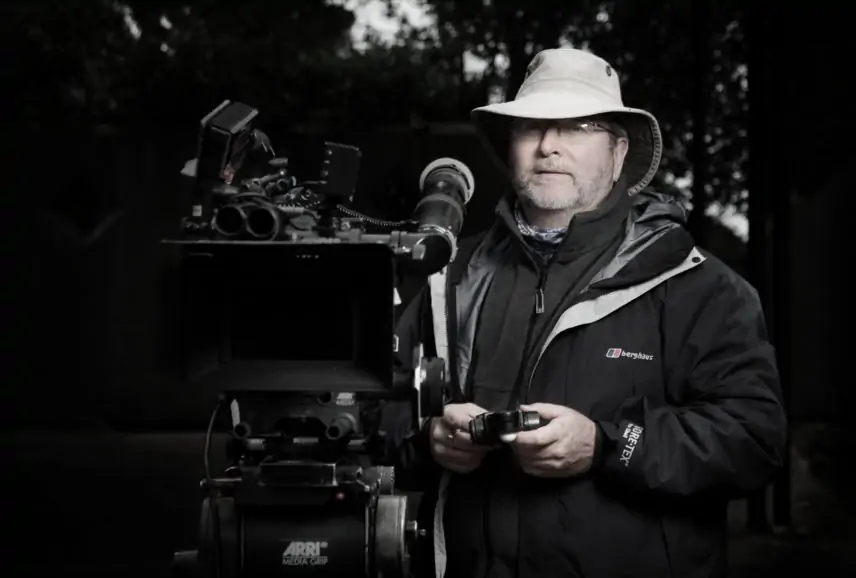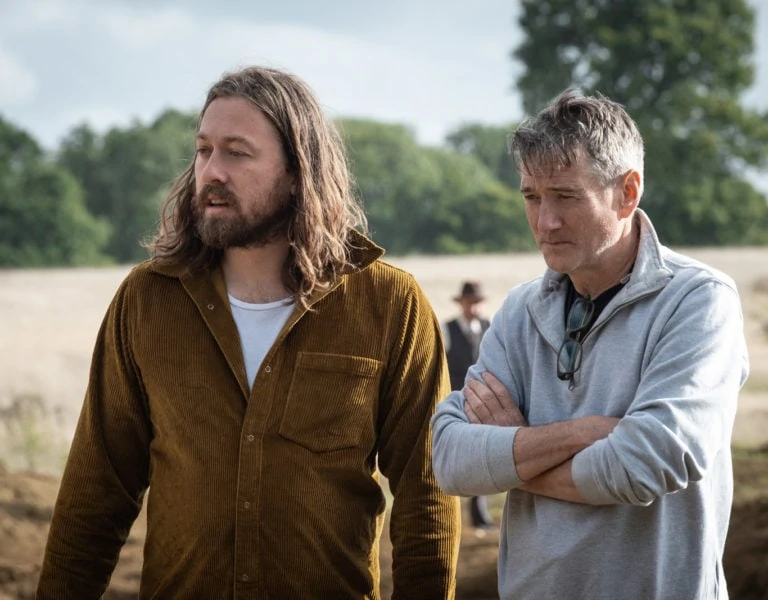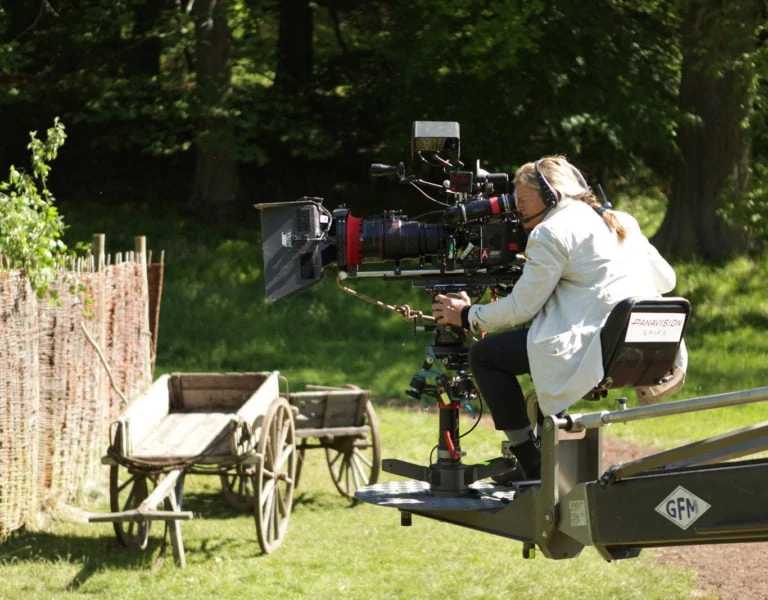FREEDOM TO CREATE
Cinematography is the adventure Sean Bobbitt BSC always craved, allowing him to explore new worlds and experience a rush of intellectual and visual freedom. Sharing stories from an extraordinary career, he discusses creating imagery relevant to a truth, captivating audiences, and life-changing filmmaking experiences.
The notion of a career as a feature film cinematographer came to Sean Bobbitt BSC relatively late in life. “I really didn’t know I wanted to be one until I was almost 40 years old. At that point, I’d been a cameraman for 20 years, shooting news and documentaries,” he says, speaking from the houseboat on the River Thames where he has lived for more than a decade.
Since then, cinematography has become an all-encompassing passion for Bobbitt. His ability to move an audience with his visual prowess can be seen in some of cinema’s most compelling and insightful stories, from the distinctive documentary-influenced Wonderland or crime thriller The Place Beyond the Pines through to true stories such as the Academy Award-winning 12 Years a Slave and this year’s Judas and the Black Messiah.
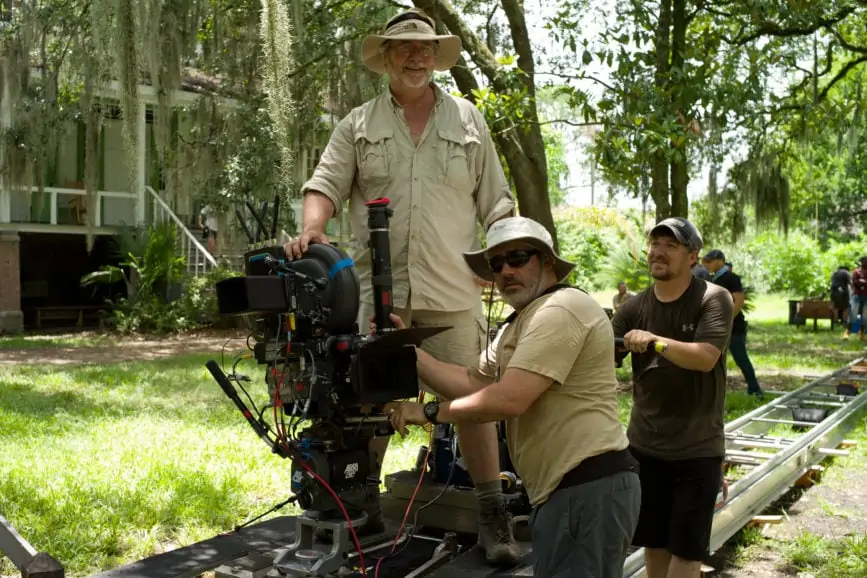
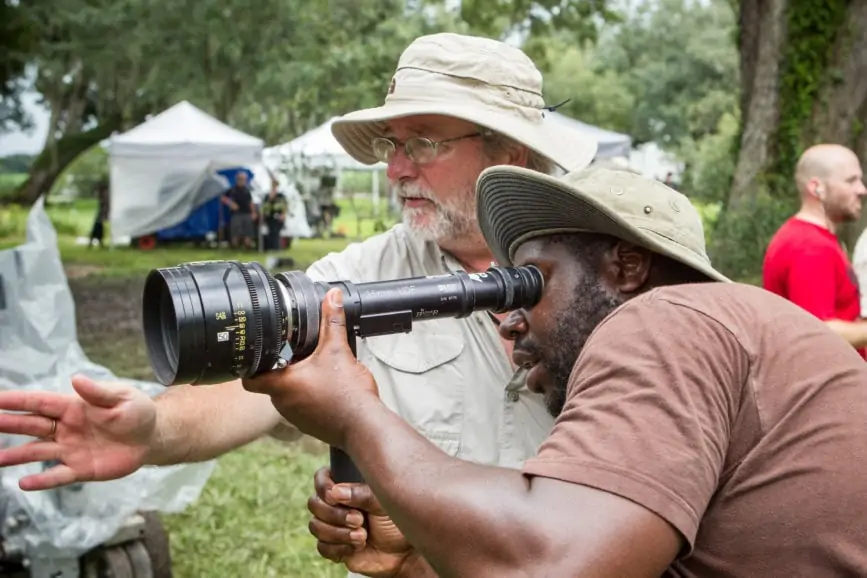
“It’s the best job in the world, encompassing a huge variety of skills, from the technical to the intellectual. You’re an artist and a technician and are given incredible freedom to create,” he says. “Every film is an opportunity and it’s humbling to be allowed into these different worlds. That adventure I’d craved as a child has been given to me and it’s such a rewarding existence.”
Born and raised in Corpus Christi, Texas, until the age of six, Bobbitt’s earliest memories of film include watching movies at the drive-in cinema in the family station waggon. When they moved to Saudi Arabia due to his father’s career in the oil industry, there were no cinemas aside from an illegal church cinema in their compound. “Films were smuggled in for us to watch and I remember most vividly being blown away by a 16mm projection of Lawrence of Arabia.”
Following the family’s relocation to England when Bobbitt was nine, he began experimenting with his father’s Nikkormat 35mm stills camera and built a dark room in his teens with friends who were keen photographers. “I was a really bad photographer and had no idea about composition but enjoyed the darkroom process,” he says. “The creation of an image out of a blank piece of paper was like magic.”
Childhood career ambitions of a life of adventure as a soldier or fireman were replaced by a passion for writing, seeing Bobbitt study literature and philosophy at Santa Clara University in California. Being a “proto-punk with an odd accent at a strait-laced American University” was a challenge at first. “I didn’t get on with people to begin with and found my lectures deadly, but the university had a fantastic theatre arts department which I drifted into because they were such mad, kind and welcoming people,” he says.
To put the theatre lighting experience he had gained to good use, Bobbitt went on to learn about television lighting and producing which sparked a desire to become a multi-camera, studio and OB director and saw him change his major to focus on television producing, writing, and directing. Bobbitt later headed up the studio his teacher Father John Prevett had “managed to build with nobody noticing”. In his final year, he was lighting and directing productions by students and those outside of the university. “It was an incredible education, but in the back of my mind I still thought I would be a writer.”
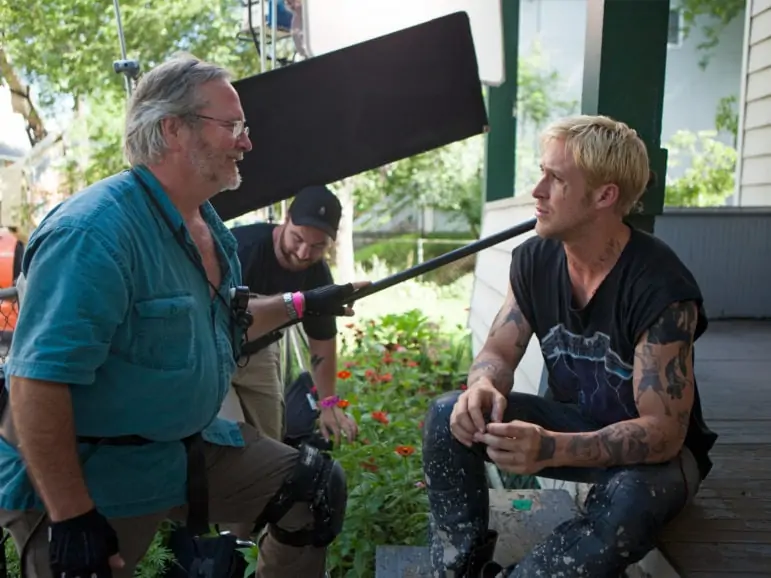
A desire to explore
Bobbitt had a curiosity about what was happening on a global scale but felt that in America at that time “few people really cared what was going on in the world”. Returning to England with the valuable experience gained at university, a 20-year-old Bobbitt was interviewed for many live multi-camera studio director positions, convinced he would be successful. “Although people were impressed by my experience, they didn’t employ me, informing me that the average age of a live studio director at that time was 42.”
Bobbitt – who was “broke and sleeping on friends’ couches” – got his career back on track after spotting an advert in a trade magazine announcing the launch of Television News Team which would introduce electronic news-gathering (ENG) equipment to the British news world. Although the “wonderfully eccentric combat cameramen” who set up the company could not offer him employment shooting news, they asked him to join as their sound recordist.
“I was paired with Nigel Wheeler, a remarkable young cameraman,” he recalls. “He’d had no training but just knew what to do. He was the most naturally intuitive cameraman I’ve met.”
Although, as Bobbitt admits, he was “a very bad sound man”, luckily another door opened due to his relationship with broadcast network CBS. “I told them I could shoot but sensed their reluctance to give me a camera considering how poor a sound man I was.” But when the Falklands War began there was a lack of news cameramen in London to cover it, so Bobbitt was given the opportunity to freelance.
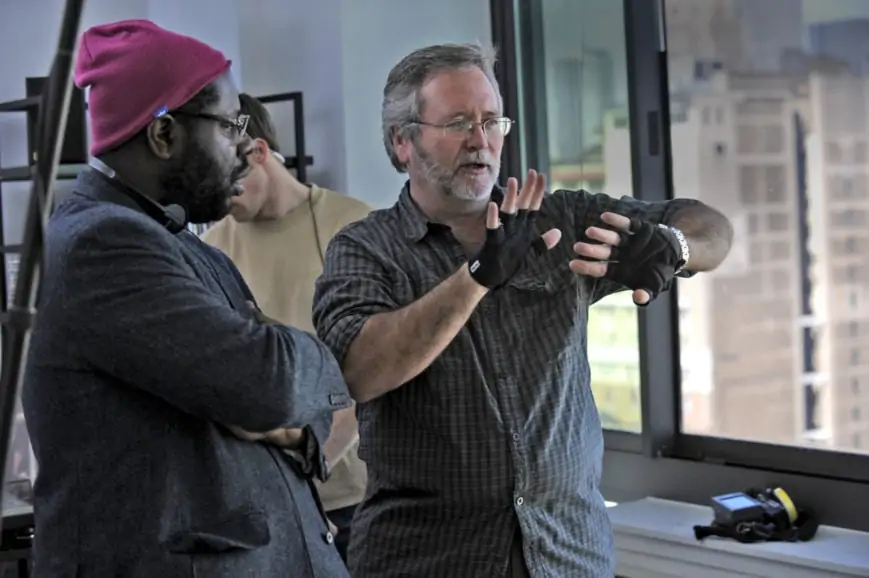
It provided the life of excitement and training ground he yearned for and took him around the world, visiting conflict zones, at first shooting on tape formats and then teaching himself how to shoot on film. “The expectations of the quality of my work were low,” he says. “They were often just happy to see us return alive. If we had any footage, that was a bonus.”
As he became more competent, Bobbitt learnt about the visual storytelling complexity being a news cameraman demands and the vast amount of information that must be included in a short timeframe. There was a discipline to capturing as much in camera as possible and breaking down a scene in real time. “You’re always thinking about what you need to tell the story visually and how it all fits together, so you can’t waste time on a shot,” he says. “It’s all about using available light and colour temperature theory, so I became more interested in the technical aspects and experimenting with filters and lighting instruments.”
Bobbitt immersed himself in books about photography and specifically portraiture due to its relevance to news interviews. “My bosses were so forgiving of experiments that didn’t work – they’d still put them on the air,” he says. “It was this amazing playground, where you travel the world and build a remarkably useful skills base. I didn’t realise this at the time because I still thought I would be a writer or director and that I was gathering stories and ideas – seeing human nature at its worst and its best.”
One of the stories Bobbitt has most pride in covering was the 1982 siege of Beirut. “The American and international press corps hung in there and changed global public opinion and ultimately were the pressure that ended the siege. It was a high point for American news gathering.”
After spending a decade as a news cameraman in war-torn locations and despite the sense of adventure it delivered, Bobbitt decided a change was needed. “You realise you’re not immortal and that the adrenaline addiction you’re living on could kill you,” he says. “As I saw people dying around me, I recognised this wasn’t sustainable. I’d told myself if I ever stopped crying at the horrors we witnessed, I had to do something else. I had started to become inured to the horrors around me.”
Delving deeper into the story
Walking away from his career as a news cameraman was difficult at first as “complete news junkie” Bobbitt found it hard to be left behind by his colleagues. “I was also pigeonholed, so people were reluctant to give me an opportunity to do anything outside of news,” he says. “So again, I went bankrupt and slept on couches.”
Companies such as rental house The Picture Cabin Company then began hiring Bobbitt for a variety of jobs, from educational films to pop promos. Developing a reputation outside of news, he was offered work as a documentary cameraman, giving him more time to delve deeper into the story and create longer sequences.
Reading books such as Dennis Schaefer and Larry Salvato’s Masters of Light and magazines including American Cinematographer further ignited his imagination, opening up the exciting world of cinematography. “I still wasn’t thinking about moving into feature films, but I was suddenly aware of all this cool equipment. You would normally travel with maybe three lights for documentaries, but I started bringing up to 12 lights for more complex setups which drove everyone mad.”
Of the many documentaries Bobbitt shot in the ‘90s, mini-series Watergate (1994) about the Richard Nixon scandal stands out to him as one of the most significant, as does the work of its producer Norma Percy due to the access she secured and freedom she gave the crew to tell an important story. Other documentaries made with Percy, including The Second Russian Revolution (1989-1991) and The Death of Yugoslavia (1995), Bobbitt also considers “intelligent, in-depth, and meticulous documentations of moments of history”.
With a sizeable list of documentaries to his name and having read a vast number of cinematography books, Bobbitt tried to venture into drama but struggled to get a break, so he dabbled in the world of light entertainment, which is when he landed Saturday Night at the Movies. “I completely screwed up on the first day and got fired,” he says. “This had never happened to me, so it was absolutely devastating.”
Determined to fulfil his production ambitions, Bobbitt attended British cinematographer Billy Williams OBE BSC’s seminar and week-long cinematography course at the International Film and Television School in Rockport, Maine, US. “Spending that time with Billy changed everything. He brought all the technical and practical things I’d read about together in an exciting and accessible way. Halfway through that week, I knew I needed to be a feature film cinematographer. When I told him about how horrendous it had been to get fired, he said, ‘My dear boy, I can’t begin to tell you how many major features I’ve been fired from. It’s simply a rite of passage.’”
Following another fruitless period attempting to secure work in drama back in the UK, Bobbitt was asked to meet director Michael Winterbottom. He was looking for a documentary cameraman to shoot his next feature Wonderland (1999) and several people, including producers Anita Overland and Nick Reed, had recommended Bobbitt. “Mike’s idea for Wonderland was fantastic. He wanted to shoot it in a very individual way. We wandered the streets, shooting test footage. I thought it had gone well but then the rushes were the worst I’ve ever seen, and I was mortified. I was shocked when I was later offered the film.”
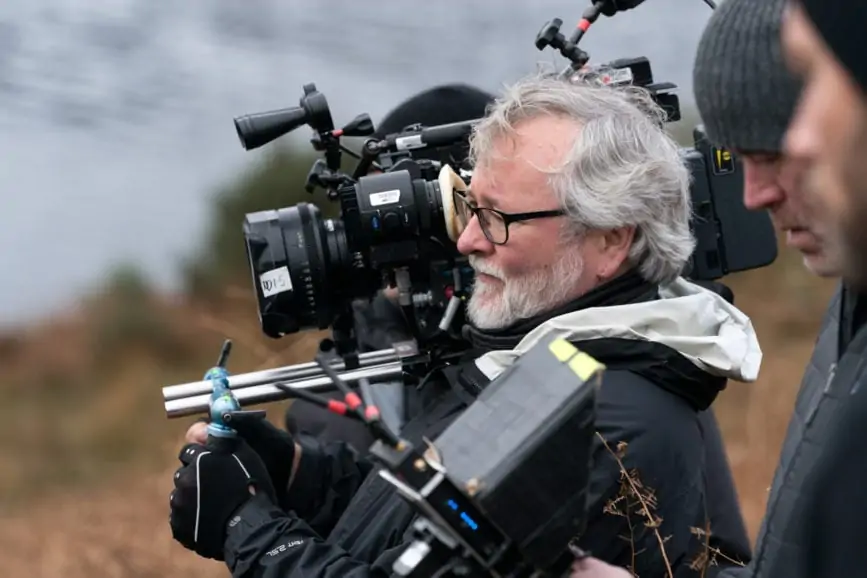
Shooting Super 16 “on every film stock that existed” was integral to the story, as was experimenting with film processing. The love for Super 16 that Wonderland triggered inspired Bobbitt to shoot his later TV drama productions that way before switching to 35mm as he moved more into the feature film world.
“It’s a constant quest to keep up with what’s new and figure out whether it helps tell the story,” he says. “I make sure whatever format I choose is relevant to the story and try to shoot on film if I can. If shooting on film were to become less of a possibility, I think it would be to the detriment of the cinematographer.”
Following Wonderland, Bobbitt did not believe he would need an agent, despite Winterbottom’s suggestions. When the film premiered at Cannes Film Festival to a standing ovation, the cinematographer realised he might need to reconsider. Initially, many people approached him “to make the same film” and Bobbitt declined, wanting to avoid being pigeonholed as he had been in the past. “I held off for a long time, went broke again and then in 2001 I was offered the classic BBC period drama Nicholas Nickleby and that was the catalyst.”
Great inspirations
As Bobbitt began to understand drama, the storytelling skills he had developed and his understanding of sequence and pacing came to the forefront. “Decisions I made relating to the stories we were telling became more considered and crafted,” he says. “As I watched other cinematographers’ films and followed their filmmaking journeys, I understood what they were doing. For example, Roger Deakins and Robby Müller’s instinctive natures were inspiring as I started to build concepts and approaches.”
Barry Ackroyd BSC was another role model, having moved from documentary into drama, creating work with “an integrity and an honesty” which Bobbitt aspired to. “He also got me in for a couple of days to shoot second unit on United 93 and literally gave me the film Embrassez qui vous voudrez because he was unavailable. I cannot thank him enough.”
Aside from the creative inspiration from others, the relationship with the director is fundamental because “they are the people who really choose you”. “I look upon myself as a director’s cinematographer. My role is clear – to create the visual world and tell the story as the director sees it. I need to understand the story and craft the cinematography around it, holding it together in a coherent world that the audience is lost in and captivated by,” he says. “Discussions with the director about the story are the gold you constantly dig for. Immersing ourselves and looking at many references means all that information is stored, so as we work on the film the solutions come naturally from within.”
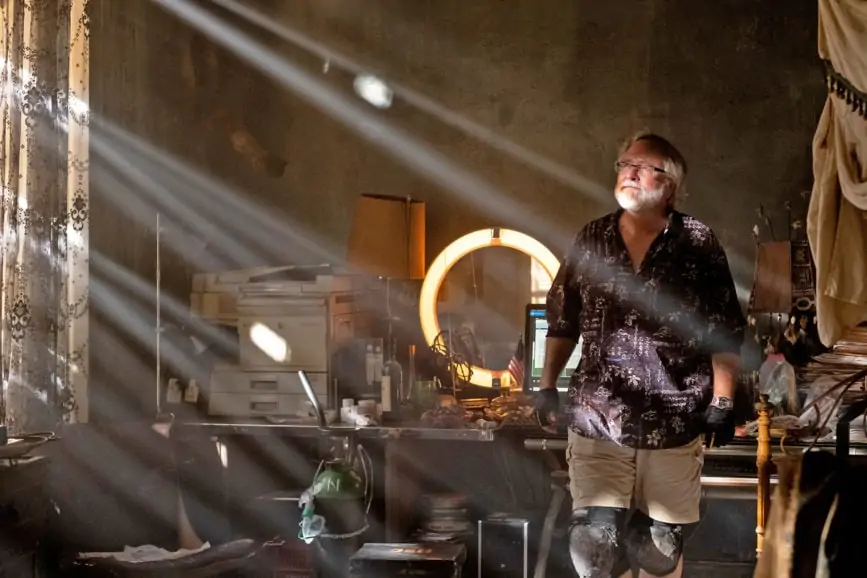
Those solutions have always been effortless during Bobbitt’s long-time collaboration with filmmaker and artist Steve McQueen. After seeing Wonderland, McQueen’s wife Bianca urged him to work with the cinematographer that had helped create the film’s documentary-inspired visual language.
“When Steve first got in touch, he was working on art installations and I had no idea what to expect. He was fascinating and so unique because there’s so much going on inside him – this complexity of concepts and ideas. By the end of the meeting, I knew I really had to work with him.”
2002’s Western Deep – the first McQueen video art installation Bobbitt collaborated on – saw the pair venture down one of South Africa’s deepest gold mines. “We talked about the history of South Africa and the slavery of the mines, but never about what was specifically down the mine,” he says. “It wasn’t until we were almost two miles underground in one of the most hostile environments I’ve been in that I asked what we would do next. Steve said he wasn’t sure. He knew there was something there, we just had to find it.”
Initially, a mildly claustrophobic Bobbitt was angry to have been brought to such a dangerous place without a clear idea of why, but as he began filming something clicked. “I realised the desire to impose a structure and a narrative was wrong. Everything I’d done until that point was narrative and linear, but this was open-ended. All I had to do was create imagery that was relevant to a truth.
“That day changed me forever, opening my mind to a world of art where nothing is right or wrong. It’s what you feel and see and how you react to it. It was like that adrenaline injection from years ago; a rush of intellectual and visual freedom through my body.”
Bobbitt considers McQueen’s art to be “remarkable” – taking images, which in a normal narrative would be completely disparate, and joining them to create an emotional effect. “You cannot see his artwork without being moved. The possibility of me being associated with a true work of art was zero and then I was given the opportunity to be part of something completely unique. Steve created a bona fide work of art from the images shot on that day down the mine.”
[Steve McQueen] has the ultimate open mind and is incredibly collaborative, always wanting to understand what others are thinking whilst holding onto that truth. Like him, I’m drawn towards true stories and those that have a purpose.
Sean Bobbitt BSC
Freedom to experiment
Forever grateful to McQueen for giving him an opportunity and opening his mind, Bobbitt is also honoured to have been asked by the award-winning director to collaborate on multiple occasions following the eureka moment down the mine. After teaming up on two more McQueen art installations – Charlotte and Gravesend – the pair united for McQueen’s first feature Hunger (2008), based on the true story of the hunger strike led by Irish Republican Bobby Sands.
“Having spent so much time with Steve, I had a sense of the truth he hunts for, that reality in the story which is not always found in the words, but often in a gesture or a small detail,” he says. “Steve was one of four contemporary British artists Channel Four gave the opportunity to make a film and he naturally fell into the role of directing actors – it was a remarkable experience. We had so much freedom, so when we came up with the idea of a 17-minute static shot of two actors talking everyone was incredibly supportive.”
This freedom to experiment in their filmmaking was echoed in McQueen and Bobbitt’s later collaborations including Shame (2011), the Academy Award-winning 12 Years a Slave (2013), and Widows (2018). “There’s always an element of freedom because of the type of person Steve is. He has the ultimate open mind and is incredibly collaborative, always wanting to understand what others are thinking whilst holding onto that truth. Like him, I’m drawn towards true stories and those that have a purpose.”
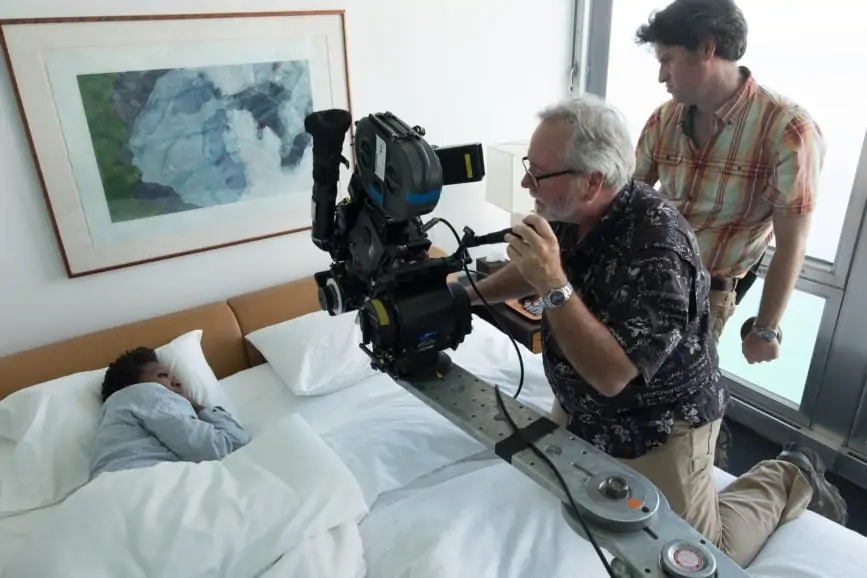
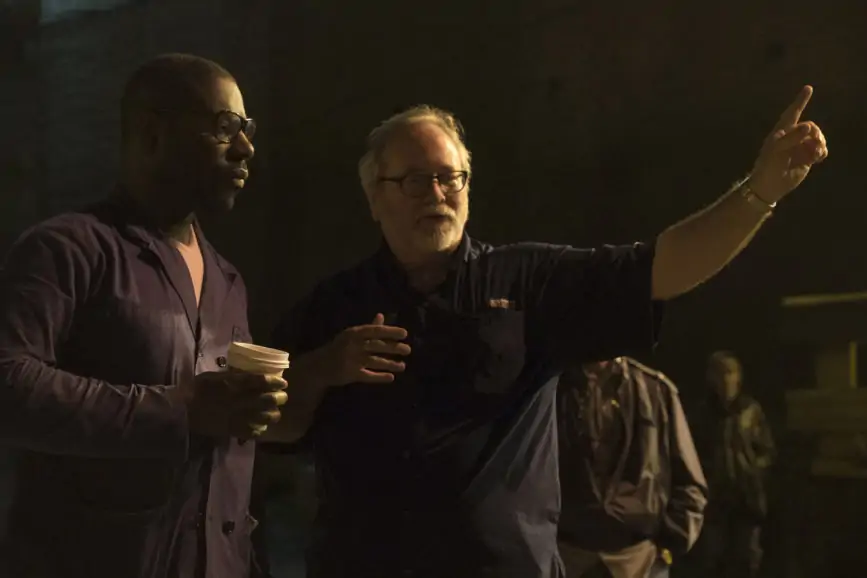
The filmmakers’ bold decisions and experimental storytelling – such as Hunger’s 17-minute take or the unflinching and distressing shot in 12 Years a Slave of Solomon Northup struggling on tiptoes as he hangs from a tree – have inspired filmmakers looking for approaches to tell powerful stories. The long continuous take is a technique Bobbitt returns to because it is “so incredibly effective at storytelling and has such a dramatic and emotional effect on the audience”.
McQueen and Bobbitt realised that by not cutting, the audience is subconsciously more drawn into what is happening. “When you cut, they’re reminded they’re watching a film,” he says. “It’s an effective and powerful tool to understand, particularly, sadly, for moments of violence.”
The technique is also effective at the beginning of a film. As soon as Bobbitt read the script for Beyond the Pines, he saw it as one continuous handheld shot from when Ryan Gosling’s character Luke gets ready in his Winnebago all the way through to him walking through the fair and into the wheel of death. “It’s the same in the opening of Judas and the Black Messiah – a long continuous, in that case, Steadicam shot.”
Although admitting he probably has a recognisable style, Bobbitt believes it is vital for cinematographers to have the ability to adapt to any genre, constantly working with different styles, techniques, equipment and approaches that suit the telling of that specific story. “Some say they recognise my work immediately and that kind of annoys me because I hope they wouldn’t,” he says. “They should be enthralled by the story and performance and not see the work of the cinematographer first. The cinematography should be maybe the fifth thing they talk about as it should support the story.”
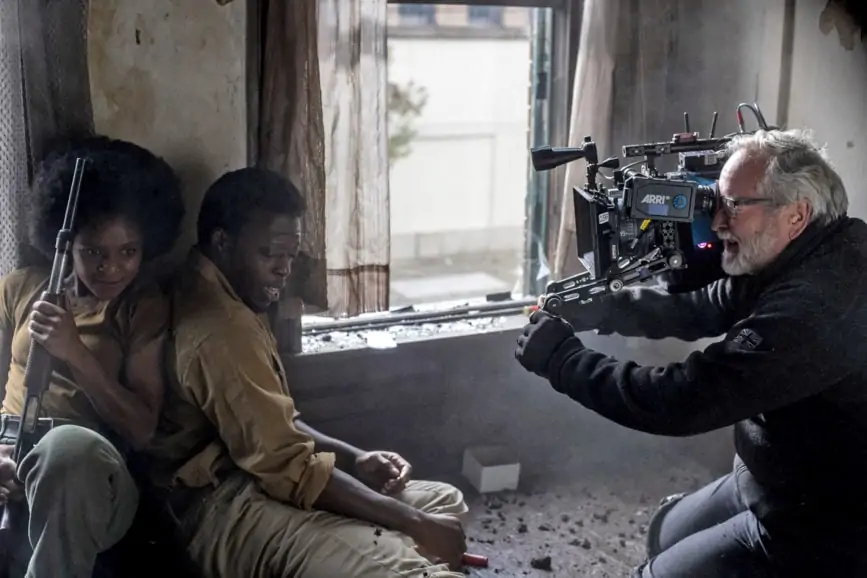
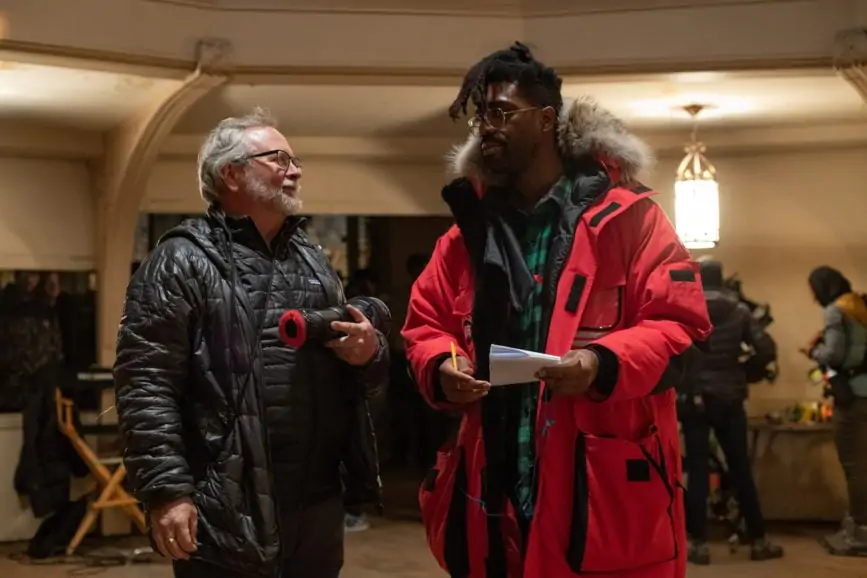
In 2011, he temporarily pulled himself away from the world of feature film he so adores to tell a different type of story when shooting the pilot for Game of Thrones. “From reading the script, it was obvious that if this worked, it would be enormous,” he says. “It was a fascinating experience, but I could never shoot episodic television. I have no interest in being on one job for years. I need constant change and for me that would be like an office job.”
Precious moments
Bobbitt has helped craft masterworks with remarkably talented directors including Dominic Cooke (On Chesil Beach, The Courier), Derek Cianfrance (The Place Beyond the Pines), cinematographer-turned-director Reed Morano (The Rhythm Section), and more recently Shaka King on 2021’s Judas and the Black Messiah.
“Working with a good director with passion is a joy. I have immense respect for what they do and treasure all those precious moments you share when breaking down the story. For instance, Derek Cianfrance’s passion, drive, and quest for the truth in a scene is remarkable,” he says. “Dominic Cooke comes from the world of theatre and is an absolute treasure of a feature film director. He’s so visual and has so much valuable experience with actors and producers.”
Bobbitt also feels lucky to have enjoyed successful repeat collaborations with talents such as Company 3’s Tom Poole who is “completely in tune” with the world Bobbitt wants to create when finessing the imagery. Back in 1999, Nic Lawson was focus puller and Gordon Seagrove was clapper loader on Wonderland. “Moving onto my next film, Nic – a fine cinematographer in his own right – is shooting second unit and Gordon is pulling focus. Jem Morton, who has gripped everything I’ve shot in England for the last decade, will be key grip. These are incredible friendships.”
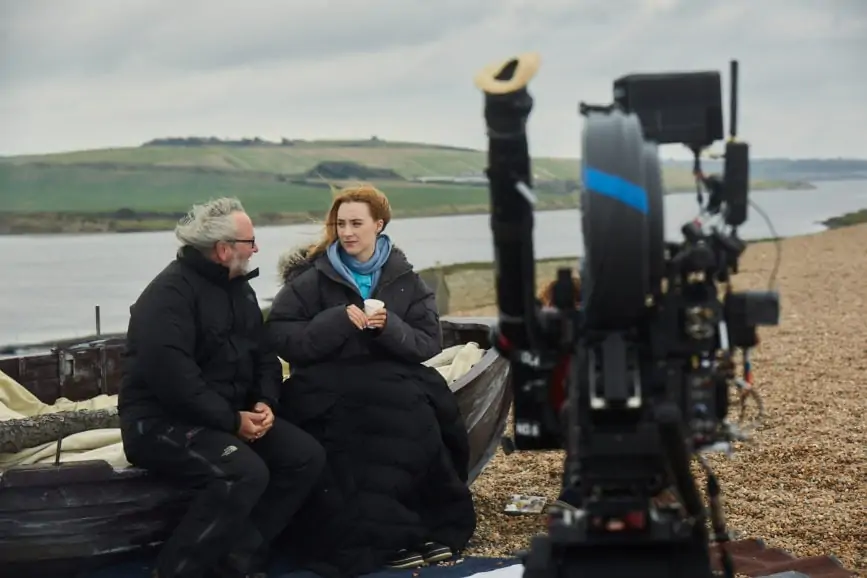
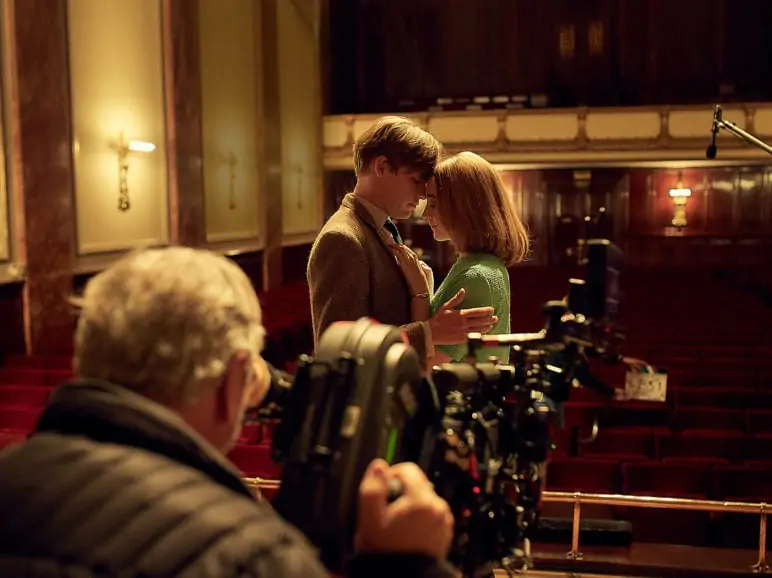
Having had a camera on his shoulder for more than 40 years, operating has become second nature for Bobbitt who has operated on all but one of his films as “it’s where the fun is”. “It’s almost a Zen-like state. My body just does it naturally which means whilst I operate, in the back of my mind I’m lighting two scenes ahead,” he says. “It’s also an incredible privilege being right next to the actor for a performance that can make the hairs stand up on the back of my neck.”
That passion for visual creativity and experimentation has been recognised through numerous nominations and awards including Hunger’s Best Technical Achievement in Cinematography BIFA and 12 Year’s a Slave’s Independent Spirit Award for Best Cinematography, but Bobbitt highlights another achievement of which he is also particularly proud: “One of the most exciting things to happen in my life was when I was asked to join the BSC. It’s remarkable to be part of such a select group and the experiences, openness and support through that network have been brilliant. It’s an important organisation, particularly for young cinematographers moving up, because it gives you credibility in the eyes of producers as well as confidence.”
Although unable to imagine wanting to be anything other than a cinematographer, Bobbitt reinforces the importance of maintaining a healthy work-life balance and taking time to unwind between shoots. “As long as I have enough time to also go fishing, I’m happy. It’s crucial to have a pastime to get immersed in because the downside of the job are the hours and level of stress that can be created over a long period of time when you’re away from family and friends,” he says. “So, when you get an opportunity, you must decompress. Fly fishing helps decrease the pace, as does living on a boat. I just cruise up and down the river and life slows down to five miles an hour – it’s a wonderful antidote.”
